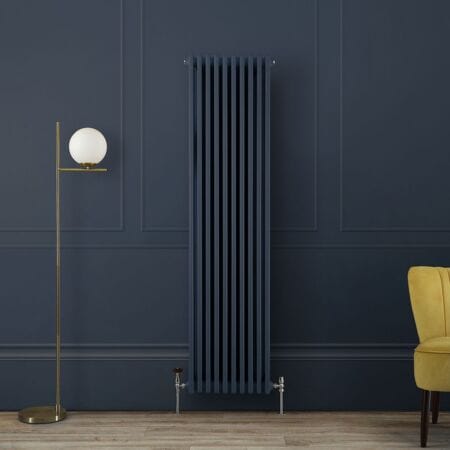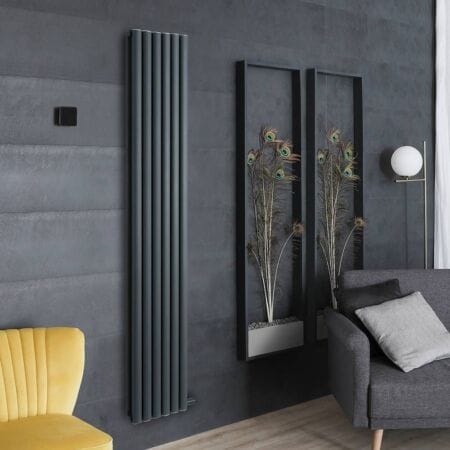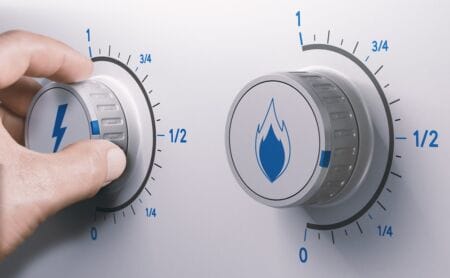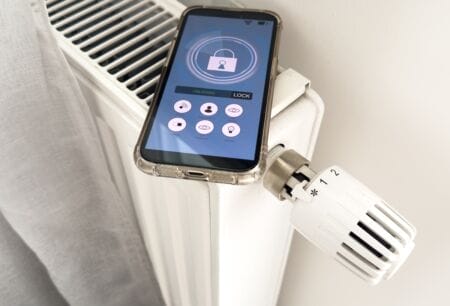Contents
ToggleWhat we’ll cover…
- Reasons to remove the towel rail prior to decorating
- How to achieve a flawless, professional finish
- Opportunities for radiator insulation installation
- Required tools and materials
- Screwdrivers, spanner, bowl, towels, radiator key
- Step-by-step guide
- Switching off radiator valves
- Removal of screws and wall brackets
- Water drainage from the towel rail
- Safe removal of the towel rail
- How to refit the towel rail following decorating
- Reversal of the removal process
- Radiator bleeding for air pocket removal
- Boiler pressure checks and allowing the system to warm up
- Troubleshooting tips and advice on what stage to seek professional help
Removing a towel rail to decorate
If you’re planning on decorating your bathroom, you’ll need to remove and refit your heated towel rail.
Watch the video guide or follow the simple steps below for full instructions on how to remove a heated towel rail for decorating and transform your bathroom, in no time.
Why remove a towel rail to decorate?
Removing your heated towel rail prior to decorating allows you to achieve both a flawless and professional finish to your newly decorated room.
It is also a good opportunity for you to further insulate your home by installing a radiator insulation kit that could help to save up to 30% of the heat that would otherwise disappear through the wall.
BestHeating recommends that you always have someone to help you to remove a radiator or towel rail.
What tools do I need to use?
You will need:
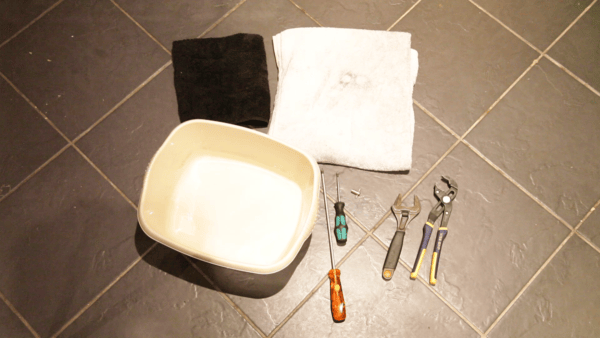
- 2x Phillips screwdrivers – small and large
- Adjustable spanner
- Pair of grips
- 2x towels
- Washing-up bowl
- Radiator key
How do I remove a towel radiator to decorate?
Just follow these step-by-step instructions and you’ll have a freshly decorated wall in no time.
Step 1 – Close the valves
First, you’ll need to turn off the valves by turning them clockwise.
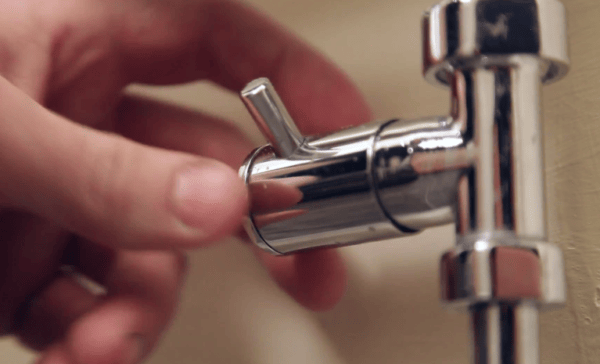
Step 2 – Remove all containing screws
Next, use the small Phillips screwdriver and remove all the retaining screws from the wall brackets.
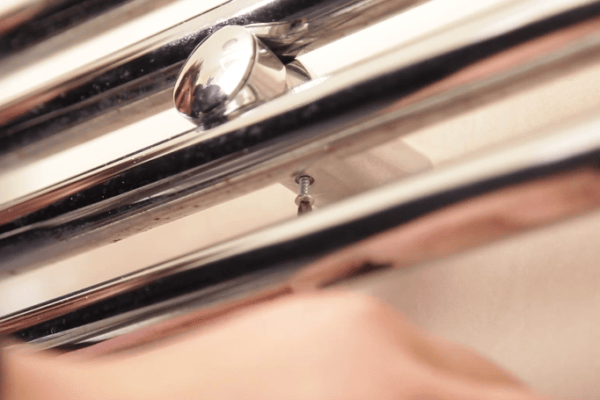
Step 3 – Prepare your washing up bowl
Once you’ve done this, place down the two towels and a washing-up bowl underneath either of the radiator valves.
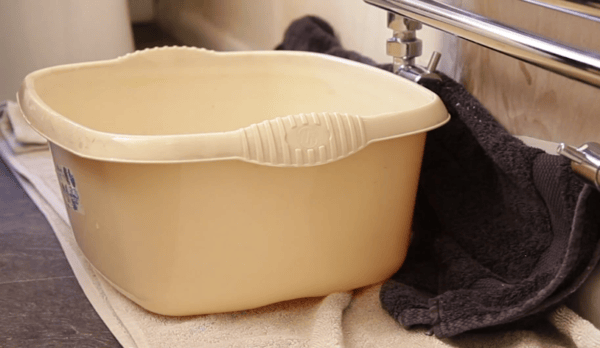
Step 4 – Undo the valve nut
Using the adjustable spanner, undo the valve nut and pull the open outlet over the bowl.
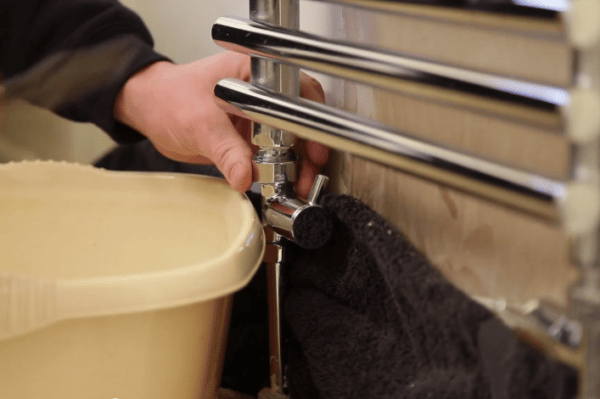
Step 5 – Drain the towel radiator
Allow the water to drain into the bowl.
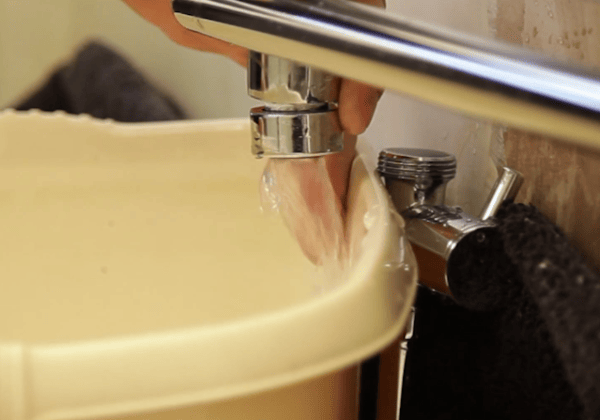
Step 6 – Open the bleed valve
Once the water has stopped open the bleed valve using the radiator key – this is to remove any remaining water in the radiator.
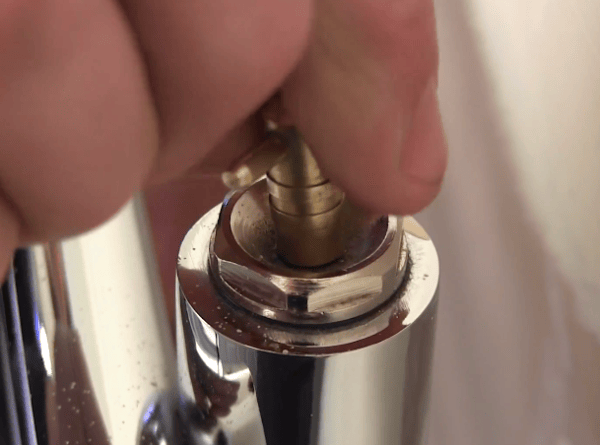
Step 7 – Move to the other valve
Close the bleed valve and undo the other nut on the valve at the bottom of the radiator.
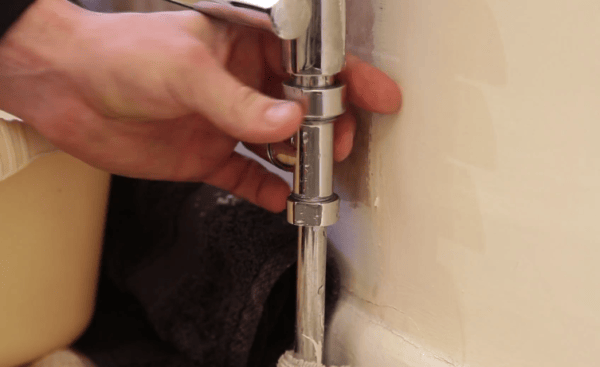
Step 8 – Remove & empty your towel radiator
The radiator is now ready to be removed. Gently pull the radiator away from the wall, and pour any contents into the bowl.

Step 9 – Make sure it is completely empty
Once you’ve removed the radiator, pour any remaining contents into the bowl, and the turn the radiator upside down to avoid any drips.
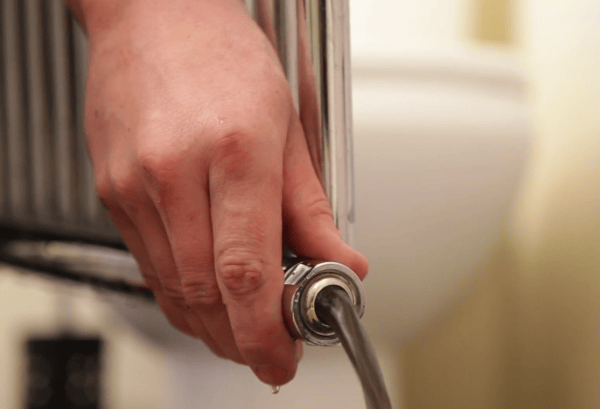
Step 10 – Remove the brackets & get decorating
Remove the remaining brackets using the large Phillips screwdriver.
You are now ready to decorate.
Once you’ve finished decorating screw the brackets back into the wall and you can refit the radiator.
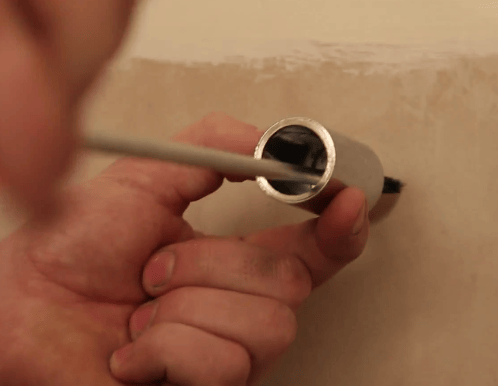
Tighten back the valve nuts and open the valves fully anti-clockwise.
The radiator is now ready for filling.
If you have a pressurised system slightly open the filling loop to top the system pressure up whilst filling.
Step 11 – Bleed the towel radiator
Bleed the radiator until it’s full of water again – it should spurt out from the bleed valve.
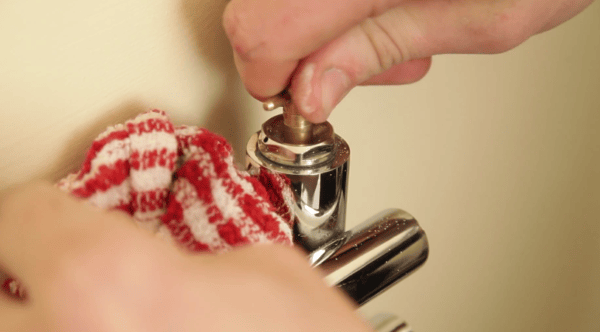
Step 12 – Check the boiler pressure
Shut off the filling loop on your boiler between 1 and 1.5 bar.
Get someone to help to monitor the pressure to ensure you don’t over-pressurise the system.
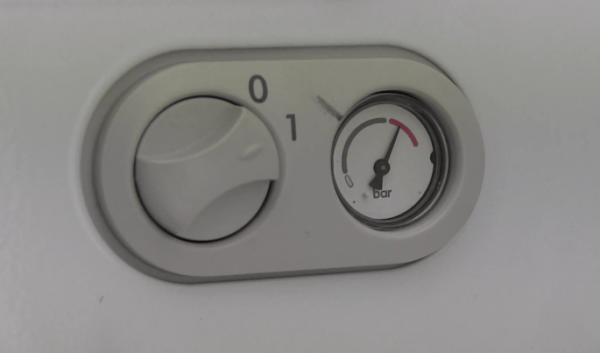
Turn the heating on and allow the system to warm up, the heated towel rail should be piping hot.
If you are still struggling…
Don’t worry if you don’t get it right the first time!
If you’ve got any urgent questions or need advice from the experts, be sure to get in touch with us. Your questions might even feature them in our next blog post. Questions can be sent via the comments section below, Facebook or Twitter.
Please note: Our ‘How-To’ manuals are intended only as a guide to assist you with common home heating tasks. Please do not attempt to undertake this task if any of the instructions are unclear, or if you are in any doubt about what to do. Instead, seek advice from a professional.
Frequently Asked Questions
The average cost to install a heated towel rail in a UK household totals £460, though this should only be used as a rough guide as many factors can influence a fluctuation in prices.
It is suggested that a heated towel rail will typically cost around £235 to purchase, and in the region of £225 to be fitted. These estimated prices can be volatile with regards to several circumstances, especially in terms of installation, including location and reputation to name just a couple.
Consult our heated towel rail buying guide for inspiration on the ideal model to select, and for further pricing information, our article titled how much does it cost to fit a bathroom radiator.
It is not essential to choose small towel rails for small bathrooms. In fact, you might find that larger towel radiators make for a better addition for a compact space; they can act as somewhat of a focal point and provide an eye-catching wall feature.
The likes of ladder style heated towel rails are a sizeable type that will offer ample storage room for towels in a busy but diminutive family bathroom, for instance. That said, there is no set rule, and provided a bathroom towel radiator offers an adequate heat output for what you want it to achieve, you can decide on a small, large or medium sized towel rail based largely on your own personal preference.
For a deeper insight, browse our blog, What are the best heated towel rails for small bathrooms?
The best time to bleed heated towel rails is just after summer, to make sure your system is fully operational and working as efficiently as possible ahead of the colder winter months when you will need it the most.
To find out more, browse our dedicated blog, How to replace a heated towel rail valve.
You can easily replace your bathroom radiator with a towel rail and they are both installed in the same way. You may want to do this to create more storage for your towels, or you might prefer the towel rail design to complement your bathroom decor.
The quickest way to replace your bathroom radiator with a towel rail is to choose a towel rail that is the same width as your original radiator. This means that you will not have to make any pipework adjustments.
You will be able to find a new towel rail with the same heat output as your bathroom radiator. Just bear in mind that the towel rail might take up more vertical wall space than the radiator.
Many heated towel rails will provide an adequate heat output to keep most bathroom spaces comfortably warm.
However, everything is relative to the size of the area – larger bathrooms might require an extra heating source to provide a sufficient BTU output.
As with any room, you can make use of our BTU Calculator to work out which heated towel rail design will be appropriate to heat your bathroom. Or, whether you also require the likes of radiators to provide extra warmth.

John Lawless is SEO Manager at BestHeating and a recognised expert in home heating. With over a decade of experience in the industry, he blends technical insight with practical advice on everything from energy efficiency to radiator design, and more. John’s work has featured in national media and leading home & garden publications, and he leads the editorial strategy for the BestHeating Advice Centre – helping homeowners make smarter heating choices with confidence.

